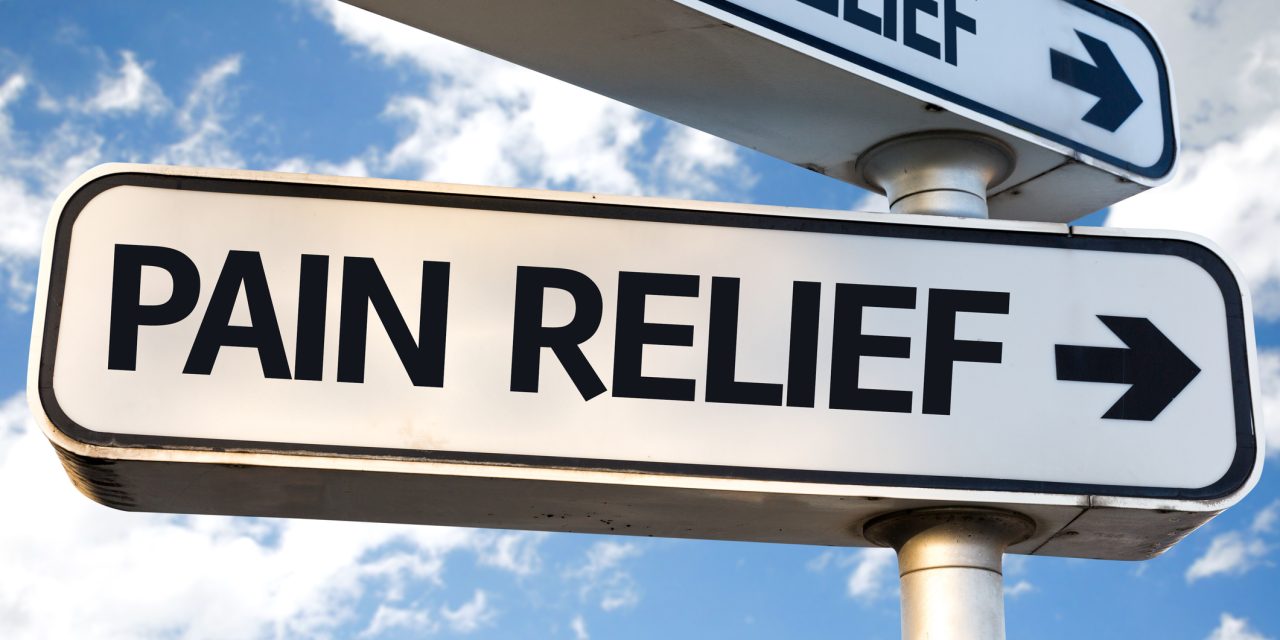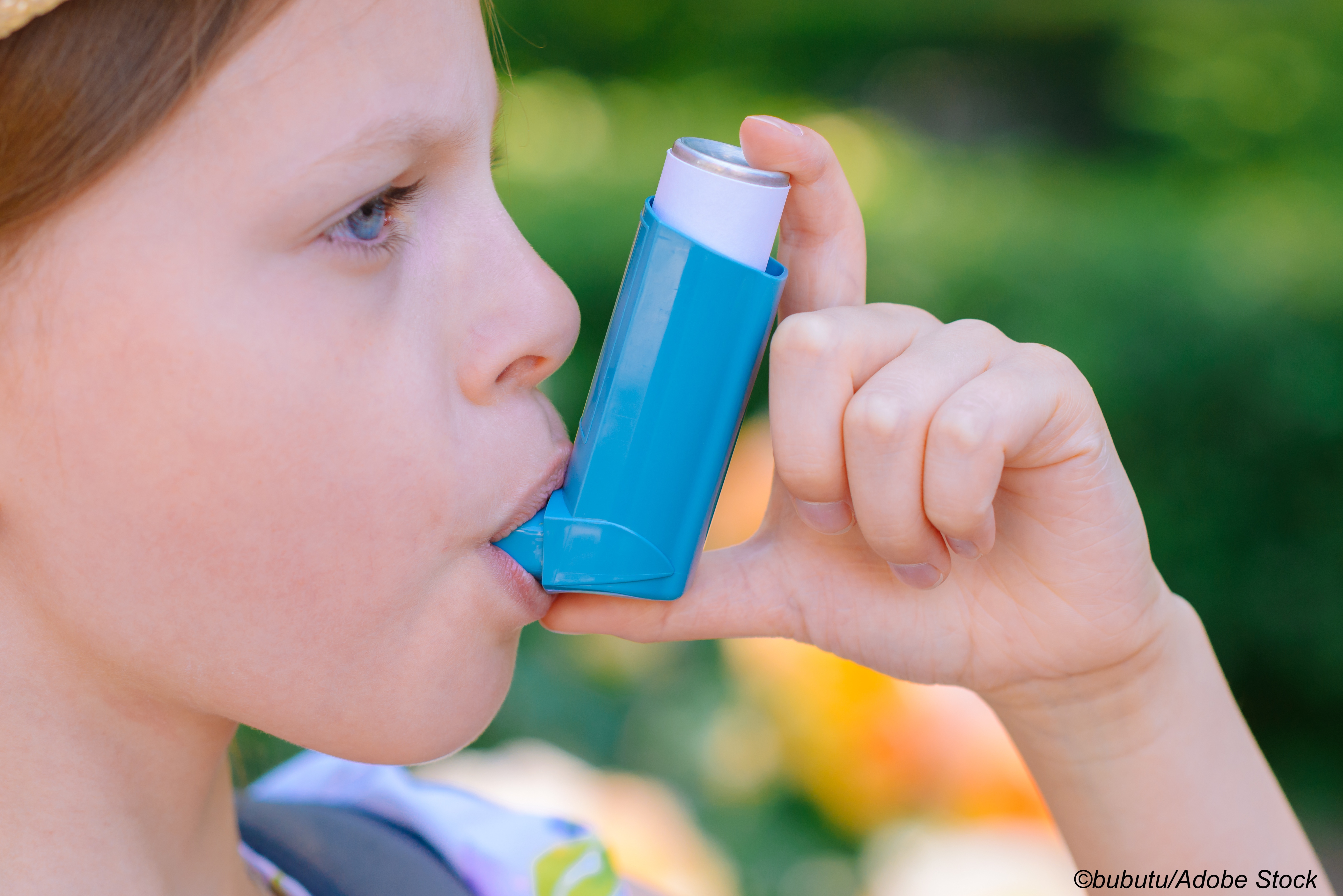Adding the biologic dupilumab to standard therapy was associated with significantly fewer asthma exacerbations, better lung function, and improved asthma control in children with uncontrolled asthma in the international Liberty Asthma VOYAGE trial.
In children between the ages of 6 and 11 years with type 2 inflammatory disease or elevated blood eosinophil counts, dupilumab add-on treatment was associated with a 59% reduction in the risk of severe asthma exacerbations, compared to usual treatment without the fully human monoclonal antibody in the 52-week, phase III randomized trial.
The children in the study had, on average, at least two asthma exacerbations in the year prior to study enrollment, but nearly four out of five (77.1%) treated with dupilumab experienced no exacerbations during the year-long study.
The phase III trial is among the first to examine an add-on biologic therapy in young children with moderate-to-severe uncontrolled asthma, and the findings confirmed that dupilumab “provided a clinically meaningful effect on lung function,” wrote Liberty Asthma VOYAGE researcher Leonard B. Bacharier, MD, of Vanderbilt University Medical Center, Nashville, and co-authors. “Furthermore, we determined the utility of a biomarker-driven approach to phenotyping and treating children with uncontrolled asthma.”
The study findings were published online December 8 in The New England Journal of Medicine.
The researchers noted that type 2 inflammation is the main driver of asthma in children “and is characterized by the release of signature cytokines interleukin-4, interleukin-5 and interleukin-13, which leads to the downstream activation of eosinophils, the production of IgE, and increased levels of fraction of exhaled nitric oxide and mucus production.”
Dupilumab is a fully human interleukin (IL)-4 and IL-13-blocking monoclonal antibody, which is approved for the treatment of adults and adolescents with asthma and other type 2 inflammatory diseases, such as atopic dermatitis and chronic rhinosinusitis with nasal polyposis.
The phase III, randomized Liberty Asthma VOYAGE trial included 408 children between 6 and 11 years of age with uncontrolled asthma and type 2 inflammatory phenotype or elevated eosinophils randomized to receive a subcutaneous injection of dupilumab given as add-on therapy every 2 weeks at a dosage of 100 mg for children weighing ≤30 kg and 200 mg for those weighing >30 kg or matching placebo.
The study included children from Western countries, Latin America and Eastern Europe, but approximately 90% identified as White.
The annualized rate of asthma exacerbations was the primary study endpoint, and secondary endpoints included change from baseline in percentage of predicted prebronchodilator forced expiratory volume in 1 second (ppFEV1) at week 12 and in the score on the Asthma Control Questionnaire 7 Interviewer-Administered (ACQ-7-IA) at week 24.
Study endpoints were evaluated in children with either a type 2 inflammatory asthma phenotype (≥150 blood eosinophils per cubic millimeter or a fraction of exhaled nitric oxide of ≥20 ppb at baseline) or blood eosinophil counts of at least 300 cells per cubic millimeter at baseline.
Among the main findings:
- Among children with type 2 inflammatory phenotype, the annualized rate of severe asthma exacerbations was 0.31 (95% CI, 0.22-0.42) with dupilumab and 0.75 (95% CI, 0.54-1.03) with placebo (relative risk reduction in the dupilumab group, 59.3%; 95% CI, 39.5-72.6; P<0.001).
- Mean (±SE) change from baseline in ppFEV1 was 10.5±1.0 percentage points with dupilumab and 5.3±1.4 percentage points with placebo (mean difference, 5.2 percentage points; 95% CI, 2.1-8.3; P<0.001).
- Children treated with dupilumab also had significantly better asthma control (P<0.001).
- Similar results were observed in the patients with an eosinophil count of at least 300 cells per cubic millimeter at baseline.
Adverse events were similar across treatment groups, with 83% of dupilumab-treated children experiencing adverse events, compared to close to 80% of placebo-treated patients.
Viral infection of the upper respiratory tract occurred in 12.2% and 9.7% of dupilumab- and placebo-treated children, respectively. Discontinuation of the trial intervention due to adverse events occurred in 1.8% and 1.5% of the dupilumab- and placebo-treated patients, respectively.
Serious adverse events were reported in 13 dupilumab-treated children (4.8%) and 6 (4.5%) in placebo-treated patients. Eosinophilia occurred in 5.9% and 0.7% of dupilumab- and placebo-treated patients, respectively, but most cases were self-limited and asymptomatic.
“A single case of eosinophilia was associated with clinical symptoms that included hospitalization and permanent discontinuation of dupilumab,” the researchers wrote.
In an editorial published with the study, Esteban González Burchard, MD, of the University of California, San Francisco, and Luisa Borrell, PhD, of City University New York, cited the lack of racial diversity in the trial population as a limitation.
“This lack of racial and ethnic diversity limits the generalizability of trial results and is troubling, given that populations of European origin are in the minority worldwide and are the least affected by asthma,” they wrote.
The editorial writers’ noted that by enrolling patients and analyzing study findings by blood eosinophil counts and fractional exhaled nitric oxide levels, “this trial helped to further our understanding of the use of asthma phenotypes in the choice of therapy.”
“The results of this trial support a biomarker-driven approach to the treatment of children with uncontrolled asthma,” they wrote.
But they added that it is, as yet, uncertain whether asthma phenotypes apply across racial and ethnic populations.
“Although dupilumab appears to be highly effective in children of European origin, it is unfortunate that the effectiveness remains unknown for the population with the highest morbidity and mortality from severe asthma. In addition, purchasing the drug may not be within fiscal reach for most patients worldwide. For example, in the United States, if a patient is unable to obtain insurance coverage for dupilumab, the estimated out-of-pocket cost for the therapy can be as high as $45,600 per year, an amount that is higher than the annual minimum wage in most U.S. states…
“This cost represents a significant financial burden and barrier to care for many minority patients in the United States and worldwide.”
-
Adding the biologic dupilumab to standard therapy was associated with significantly fewer asthma exacerbations, better lung function, and asthma control among children with uncontrolled asthma.
-
Dupilumab add-on treatment was associated with a 59% reduction in the risk of severe asthma exacerbations, compared to usual treatment without the fully human monoclonal antibody in the 52-week Liberty Asthma VOYAGE trial.
Salynn Boyles, Contributing Writer, BreakingMED™
The Liberty Asthma VOYAGE study was funded by anofi and Regeneron Pharmaceuticals. Researcher Leonard Bacharier reported serving as a paid consultant for AstraZeneca. DBV Technologies, GlaxoSmithKline, Merck, Novartis, Regeneron, Sanofi US, Teva Pharmaceuticals, Vectura Limited and others. Several researchers reported being employees of Sanofi or Regeneron Pharmaceuticals.
Cat ID: 637
Topic ID: 85,637,730,100,637,192,63



